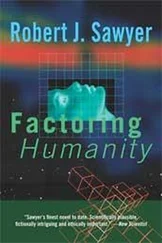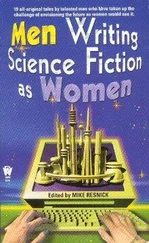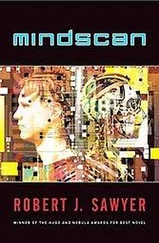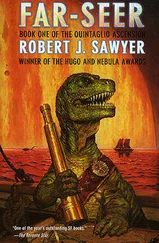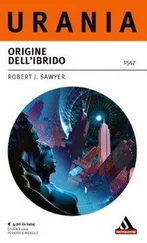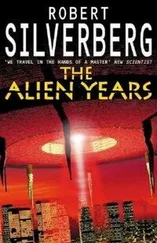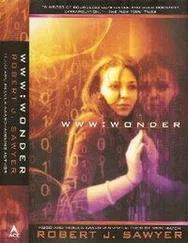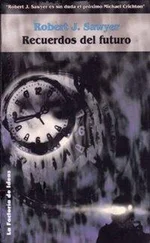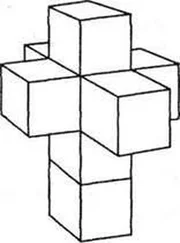“That there’s Alpha Centauri,” said Clete. “Don’t look like nothin’ special, but it’s the closest star to the Earth, ’cepting the Sun. It’s ’round bout twenty-five trillion miles away—just over yonder. Our nearest neighbor in space.”
Frank hit the fast-forward button. Clete zipped around silently, like a Keystone Kop. He was intercut with graphics showing the constellation of the Centaur. After a time Frank released the button.
“—but Alpha Centauri ain’t just one star,” said Clete. “It’s actually three of ’em, all very close together. We call ’em—Alpha Centauri A, Alpha Centauri B, and—wait for it—Alpha Centauri C. Us astronomers—we got the souls of poets.” His broad face split in a grin. “Actually, Alpha Centauri C is the closest of the bunch to us, so sometimes we do call it by a fancier name: Proxima Centauri—Proxima like in ‘proximity.’ Nuther thing y’all should know about astronomers: we like fifty-dollar words, ’cuz that’s as close as most of us ever gets to a fifty-dollar bill.” He grinned again.
The image changed to Mardi Gras in New Orleans, with Clete walking down a street at night. He paused to watch a man in gaudy dress juggling three flaming torches. “ ‘Course,” said Clete, “when you got three stars close together, things get very interesting indeed.” The camera zoomed in on the dancing torches, then pulled out of the fireplace inside Clete’s mountain cabin—a common sight in the series. He was sitting behind an old wooden desk. A potbelly stove was in the background, and a hunting rifle hung on the wooden wall behind him. A bowl of fruit sat on the desktop.
“A and B are big stars,” Clete said. He picked a grapefruit out of the fruit bowl. “This here could be A—a big yellow star, very much like our own sun. ’Fact, A’s a tetch bigger than our sun, and about fifty percent brighter.”
He reached into the fruit bowl and pulled out an orange. “Now this here, this could be B—a smaller, dimmer, orange star. B’s about ten percent smaller than our sun, and not even half as bright—kinda like my cousin Beau.” Clete winked at the camera. He rummaged around in the fruit bowl and found a cherry. “And C—well, shoot, C’s just a l’il peckerwood of a star, a cold, dim red dwarf. Dang thing’s so small and dim, nobody even noticed it was there till 1911.”
“Now, A and B—they orbit ’round each other like this.” He moved the grapefruit and the orange to demonstrate. “But the distance between ’em ain’t constant.” The sound of a buzz saw had started in the background.
“Y’all know how I hate jargon, but here’s one little bit that’ll help us out.” He turned and shouted into the distance, “Hey, you! Y’all stop that, hear?”
The buzz saw died down. Clete then looked back at the lens and grinned again. “For things that are purty close together—close enough for shoutin’—we astronomers use the ‘Hey, you!’ as our yardstick. Okay, truth be told, it’s really an ‘AU’ not a ‘Hey, you!’ AU stands for ‘astronomical unit,’ and it’s equal to the distance ’tween the Earth and the sun.” A diagram appeared, illustrating this. “Well, when they’s as far apart as they ever get, Centauri A” (he held up the grapefruit with one fully extended arm) “and Centauri B” (he held up the orange in his other fully extended arm) “are thirty-five AUs apart. That’s ’round ’bout the distance ’tween here and Uranus.”
He paused and grinned, as if contemplating making a joke about the planet’s name, but then shook his head in a “let’s not go there” expression.
“But when A and B are as close as they ever get” (he drew his arms together) “they is just eleven AUs apart—practically spittin’ distance. It takes ’em about eighty years to orbit round each other.”
He placed the grapefruit and the orange on the desktop and then picked up the cherry. “Now, Centauri C is a bunch farther away from A and B.” He used his thumb to flick the cherry clear across the room and right out an open window. “It’s a wallopin’ thirteen thousand AUs from the other two. The little guy might not even be really bound by gravity to the others, but if it is, it more’n likely takes a million years or so to revolve around them in what’s probably a highly elliptical orbit—”
Frank hit the pause button, and sat in the dark, thinking.
“Our next order of business,” said Dale Rice, leaning back in his leather chair, “is the missing body parts.”
Something was different about Dale’s office. It took Frank a minute to realize what it was. His normal chair was now on the left, and the Tosok chair was on the right; the cleaning staff must have moved them in order to vacuum the rich brown carpet. Indeed, in the late-afternoon sunlight, the paths made by the vacuum were clearly visible.
On the table across the room, Dale’s latest jigsaw puzzle had gaping holes in it.
“I wish we had some idea why those parts were taken,” said Frank.
Dale nodded. He’d put some witnesses related to them on his witness list, but hadn’t made up his mind whether he’d actually call them all. “The question we’ve put to our shadow jury is this,” he said. “ ‘Given the unusual choice of missing body parts—an eye, the throat, the appendix—are you more or less likely to think an alien was involved in the crime?’ The answer, of course, is more likely.”
“Then do we do any good by examining the question of the missing parts at all?” asked Frank.
“Well, you can be sure Linda is going to harp on them during her closing argument, so…”
Frank was quiet for a moment, thinking. Suddenly he sat up straight. “What about the Simpson case?” he said. “The DNA in the Simpson case.”
“What about it?” said Dale.
“Well, you said the Simpson criminal jury simply ignored that entire portion of the evidence. On the one hand, you had Robin Cotton from CellMark presenting the prosecution’s view of the DNA evidence, and on the other, you had all the defense experts presenting their view of it. You said the jury essentially just threw up its hands and said, hell, if these experts can’t find the truth in it, how can we? And so they ended up simply ignoring that entire line of evidence.”
Dale spread his arms, humoring the layman. “But Linda didn’t present anything for us to counter about those body parts during the prosecution’s case-in-chief.”
“That’s true,” said Frank, “but what if we present conflicting testimony about those parts? If we put people on the stand giving two mutually contradictory interpretations, the jury might still throw the whole line of evidence out. A human could have used the Tosok cutting tool, after all; the missing body parts are the thing that points most directly to an alien perpetrator—and getting the jury to ignore them is the best thing we can do.”
Dale opened his mouth to say something, closed it, then just sat there, frowning thoughtfully.
The next day, Dale Rice stepped up to the lectern in Judge Pringle’s ninth-floor courtroom. “The defense calls Dr. James Wills.”
Wills, a brown-haired white man in his late forties, was sitting in the third row, doing The New York Times crossword puzzle in ink with an antique silver fountain pen. He put the cap back on the pen, rose, and was sworn in: “James MacDonald Wills,” he said. “That’s James the usual way, although I’m commonly called Jamie, M-A-C-capital-D-Donald, and Wills, W-I-L-L-S.”
Dale went through the business of establishing Wills’s credentials—he was an anatomy professor at UC Irvine. Wills stood five-eight and weighed maybe a hundred and fifty-five pounds. Frank noticed he wore no watch, but was remarkably well dressed for a professor.
Читать дальше

